Waterproof A Deck Over Living Space: Material, Procedure & Tips

When it comes to outdoor spaces, protecting your furniture and deck from unpredictable weather is crucial. Waterproofing your deck over a living space is essential to prevent water damage. Before starting a waterproofing project, consider the best water-resistant materials and installation practices. Keep reading Capital Deck & stair waterproofing’s blog to get valuable tips for choosing the right materials and methods for waterproofing. By following these tips, you can ensure your outdoor living space remains safe and protected. Learn more about how to waterproof a deck over a living space to safeguard your investment and enjoy the outdoors without worries.
Why Get Your Living Space Waterproofed?
Protecting your living space from water damage is crucial for its longevity and your peace of mind. Water intrusion can lead to costly issues like mold growth and structural deterioration. Waterproofing creates a barrier against moisture, preserving your home’s integrity and aesthetics while increasing its value. Don’t wait for water damage—invest in waterproofing now.
Must Read: How to Restore an Old Deck So It Looks Like New
How Does Waterproofing Work?
Waterproof decking usually consists of these key elements:
Waterproof membrane: Think of this as the superhero layer—it’s the one that does most of the heavy lifting. Typically made from synthetic materials like PVC or TPO, it’s completely waterproof. This membrane sits atop the main structure, meticulously sealed at all seams and edges to ensure no water gets through.
Drainage layer: This layer plays the role of a speedy water evacuator. Its job is to swiftly whisk away any water that manages to sneak through, preventing it from pooling and causing damage.
Protective layer: Picture this layer as the decking’s bodyguard. Before the protective layer comes the drainage layer. Its mission? Shielding against water, pesky UV rays, and other elements that could potentially harm the decking over time.
Top layer: This layer is like the cherry on top. It can be made from various materials like wood, composites, or tiles. Its job is to provide a sturdy, visually pleasing surface that can withstand both heavy foot traffic and exposure to the elements.
Each layer plays a crucial role in keeping water out. They work hand in hand, like a well-oiled team—if one layer fails, the whole waterproof system could be compromised.
Choosing The Best Deck Waterproofing Materials
When it comes to distinguishing between waterproof and water-resistant materials, it’s essential to understand the difference. Waterproof materials are completely impenetrable to water, while water-resistant materials can repel water but still have the potential to absorb it. Now, let’s explore how to waterproof a deck over living space with the right & best waterproofing material.
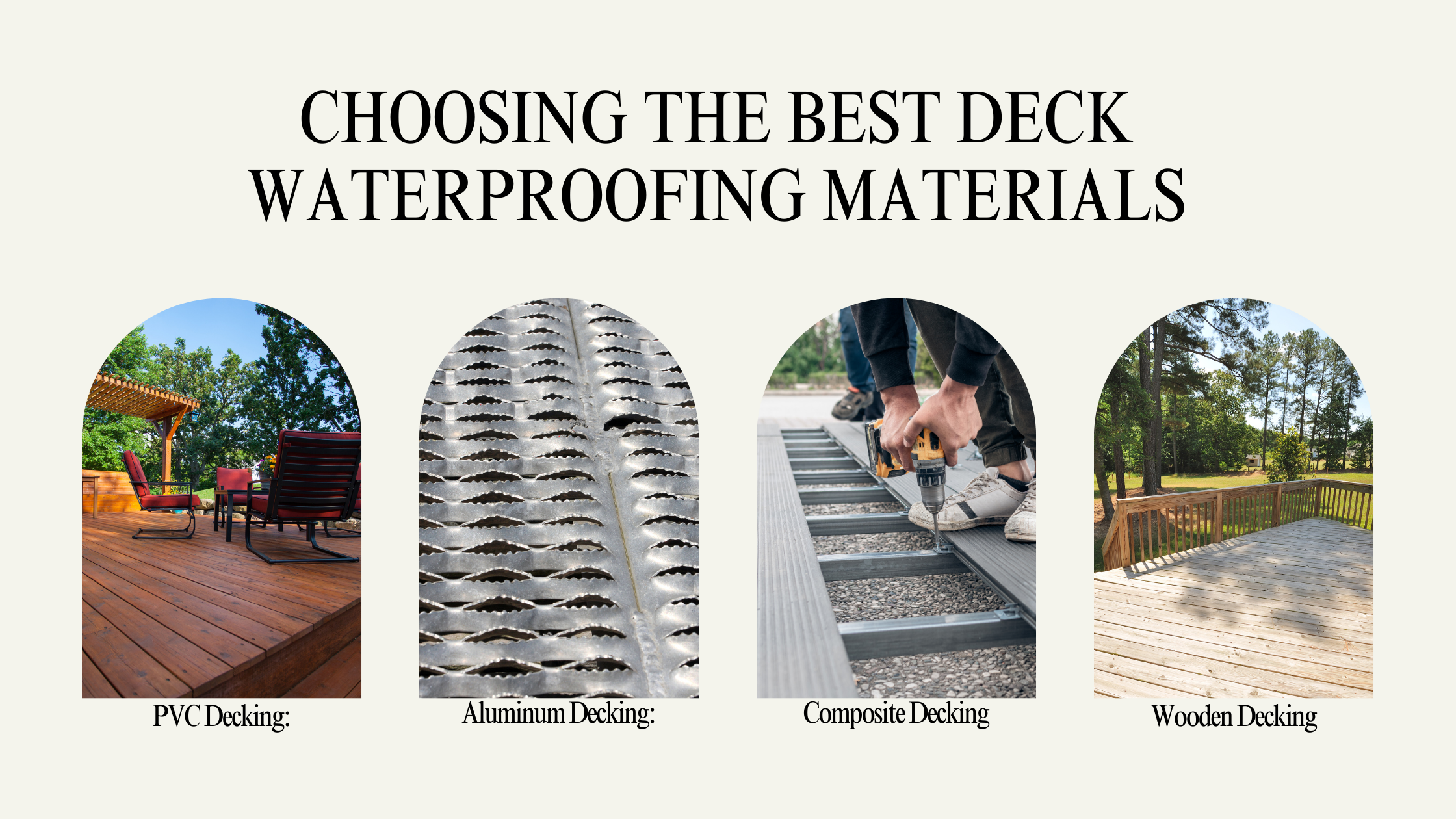
When selecting the best waterproofing material, remember the following options. Our top choices include.
PVC Decking: PVC decking, constructed from durable plastic, offers exceptional waterproofing to safeguard against water damage. Opt for capped boards for extended deck longevity. Ideal for lasting outdoor beauty and minimal maintenance. Choose PVC decking for a worry-free and long-lasting outdoor living space.
Aluminum Decking: Aluminum decking, while a pricier choice, is favored for its exceptional durability and waterproof nature. However, its installation can be challenging due to cutting difficulties. Opt for this long-lasting option for a sturdy and low-maintenance deck.
Composite Decking: Composite decking, a popular choice for outdoor spaces, combines wood and plastic for durability and style. With a range of designs available, this water-resistant material often features capped boards for added protection. Enhance your outdoor living with composite decking’s beauty and functionality.
Wooden Decking: Wooden decking is a classic and popular choice for outdoor spaces, offering a wide range of design options at an affordable price. While wood is naturally water-resistant, it requires additional treatments to enhance its durability. Explore the timeless appeal of wooden decking for your outdoor oasis.
Deck Membranes And Downspouts
Enhancing your deck with a deck membrane and downspout system is a hassle-free solution for waterproofing your deck roof. These systems, available in materials like vinyl, EPDM, and asphalt, are placed between your deck and substructure to direct water towards downspouts, acting as mini-gutters to channel water away. For flat or low-slope roofs, consider using EPDM for its exceptional waterproofing properties.
By implementing this method, you can significantly reduce the need for ongoing maintenance, ensuring your deck remains waterproof throughout changing seasons. Upgrade your deck with this efficient solution to enjoy long-lasting protection against the elements.
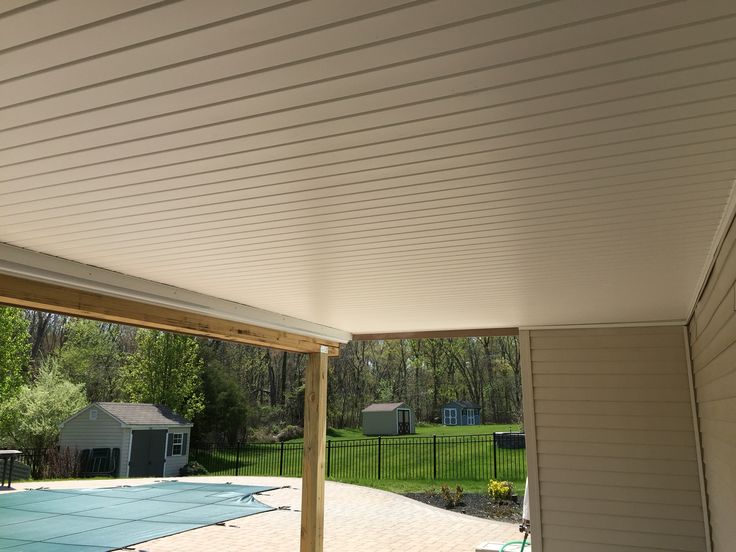
Under-Deck Ceiling Systems
Protect your deck over living spaces with deck membranes and downspouts. These membranes, often PVC-based, block water from seeping through, safeguarding the area below. Downspouts direct water away, preventing pooling. Together, they form a robust waterproofing solution, crucial for preserving your deck and the living space beneath it.
Waterproofing Deck Flanges
For a waterproof deck over living areas, ensure proper installation of deck membranes and downspouts in your under-deck ceiling system. Deck flanges prevent water intrusion, so install them carefully. Securely attach and overlap deck membranes for a watertight seal. Properly position and secure downspouts to prevent water accumulation.
Vinyl Deck Membranes
Ensure effective waterproofing over living spaces by properly installing vinyl deck membranes. Durable and versatile, these PVC-based membranes offer long-lasting protection against water infiltration. When installed correctly, they create a seamless barrier, keeping the living space dry and free from damage. With various colors and textures available, you can customize your deck’s look while maintaining waterproofing. Regular maintenance, including inspections and deck repairs, will extend the lifespan of your vinyl deck membranes.
Waterproof Liquid Deck Coatings
For effective waterproofing, consider waterproof liquid deck coatings like membranes and downspouts. Membranes applied as liquid create a seamless barrier, adaptable to structural movement, preventing leaks. Downspouts divert water, guarding against damage. Proper installation and maintenance ensure lasting protection.
Know How To Waterproof A Deck Over A Living Space With Easy Method : Top Tips
Now, let’s get into how you can waterproof a deck over living space with an easy method. First, gather your materials and plan them out, then prepare the substrate before installing metal flashings. Finally, apply the deck membrane to ensure a waterproof seal over your living space.
Step 1: Gather Your Materials And Plan Them Out
Plan materials meticulously for waterproofing your deck over living space. Gather essentials like waterproofing membrane, seam tape, adhesive, and flashing, ensuring enough coverage. Equip yourself with tools like a utility knife and roller. Consider deck specifics for a streamlined, successful project.
Step 2: Substrate Preparation
Prepare the substrate thoroughly by cleaning it of debris and contaminants. Sweep the surface to remove dirt and use a pressure washer for a deep clean, paying attention to corners and edges. Repair any cracks and ensure a smooth surface before waterproofing.
Step 3: Install Metal Flashings
Before waterproofing, ensure proper installation of metal flashings for essential protection. They prevent water infiltration and direct it away from vulnerable areas. Start with drip edge flashings along edges, then seal joints with flashing strips. Secure counter flashings to enhance water resistance. Properly installed metal flashings ensure long-term durability and waterproofing effectiveness.
Step 4: Apply The Deck Membrane
Now, proceed by applying the deck membrane carefully, ensuring it overlaps flashings and seals tightly at seams and edges. Consider a second coat for added protection. By following these steps diligently, you’ll create a durable, waterproof barrier, safeguarding your living space below.
Key Considerations For A Leak-Proof Deck
For a leak-proof deck, several key considerations must be addressed.
Deck Surface To Slope Away At ¼ Inch Per Foot: Firstly, ensure the deck surface slopes away at a quarter-inch per foot to prevent water pooling.
Proper Flashing Using Deck-Compatible Material: To ensure a leak-proof deck, consider utilizing deck-compatible material for proper flashing. Proper flashing with deck-compatible material is essential to seal vulnerable areas effectively.
Proper Drainage Using Gutters: Consider installing gutters as a key element for achieving a leak-proof deck over living space. Proper drainage is crucial to prevent water from pooling on your deck, causing potential leaks into the living space below.
For a leak-proof deck, prioritize these key factors: slope the deck surface away at ¼ inch per foot, use deck-compatible material for proper flashing, and install gutters for effective drainage. Additionally, don’t forget about the capital deck and stair waterproofing for comprehensive protection. Ensure your deck stays dry and durable.
Frequent Asked Questions About Waterproofing A Deck Over Living Space
1. Is It Possible To Waterproof An Existing Deck?
Yes, it’s possible to waterproof an existing deck by applying a waterproofing membrane or coating over its surface, ensuring proper sealing and protection against water intrusion.
2. What Is The Cost to Waterproof A Deck?
The cost to waterproof a deck varies depending on factors like deck size, chosen waterproofing method, and labor costs. On average, it can range from a few hundred to several thousand dollars.
3. How Long Does It Take To Waterproof A Deck?
The time it takes to waterproof a deck depends on factors such as the size of the deck, the chosen waterproofing method, and weather conditions. Typically, it can take anywhere from a few days to a couple of weeks to complete the process.
4. Waterproofing Deck Over Conditioned Space, How?
To waterproof a deck over conditioned space, start by selecting a deck membrane material like vinyl or EPDM. Prepare the substrate thoroughly, then install metal flashings for added protection. Finally, apply the chosen deck membrane to ensure durability and waterproofing.
5. Exterior Deck Over Living Space But How to Waterproof?
When waterproofing over an exterior deck above living space, ensure proper support, slope, and flashing. Follow these steps for waterproofing: use approved roofing membrane, add drainage mat, install a mud bed with reinforcing wire, apply uncoupling mat, seal seams with right material, and tile. Ensure proper slope away from the house. Plan for spring installation for optimal results. Visit us for detailed instructions.
6. Sealing/waterproofing a Deck Over Living Space Solutions
Ensure your deck over living space is properly sealed and waterproofed by installing a heavy rubber roof system over sloped insulation, followed by a wood deck on sleepers. It’s crucial to have a professional contractors this complex task due to the technical expertise required. Additionally, consider a roofing system underneath the wooden decking, such as rubber or bitumen, to enhance protection. Prioritize the integrity of the roofing system to safeguard both the wood and underlying structure effectively.
7. How to Water Proof Your Second-Story Deck?
To waterproof your second-story deck, consider applying a high-quality sealant, ensuring proper drainage, and using waterproofing membranes. Regularly inspect for any signs of damage or wear to maintain a durable and protected deck.
8. What Are the Best Tips for Waterproofing a Deck Over a Living Space?
To effectively waterproof a deck over a living space, start by selecting high-quality materials like vinyl deck membranes or waterproof liquid coatings. Next, ensure you hire a skilled deck builder for proper installation. Additionally, check if your chosen decking material is approved for roofing purposes. These steps will help protect your deck and living space from water damage, ensuring durability and longevity.
5 Tips for Waterproofing Cracks And Joints to Maintain a Dry Home

If you’re struggling with leaks and moisture seeping into your home, you should need to pay attention to these 5 tips for waterproofing cracks and joints. You can maintain a dry and comfortable living space by taking proactive steps to seal up these vulnerable areas. From simple DIY solutions to professional techniques, there are various options available to help you keep water out and protect your home from potential damage. Don’t let pesky leaks ruin your peace of mind – tackle them head-on with the right strategies. In this article, we’ll explore practical advice on how to effectively waterproof cracks and joints to safeguard your home against water intrusion. Stay tuned for expert tips that will help you achieve a dry and secure environment within your living space.
5 Tips for Waterproofing Cracks And Joints to Maintain a Dry Home
If you want to maintain a dry home, it’s important to inspect and seal cracks regularly. Make sure to utilize flexible sealants for joints that may be prone to water intrusion. Consider injection waterproofing for concrete cracks and install drainage systems in problematic areas while maintaining proper grading around your property.
Inspect and Seal Cracks Regularly
Regularly inspecting and sealing cracks in your home can help prevent water damage and keep your living space dry and comfortable. It’s important to check for any cracks or gaps in areas such as windows, doors, foundations, and walls. Use a flashlight to spot any potential problem areas that may need sealing. Once you’ve identified the cracks, use a waterproof sealant to fill them in and prevent water from seeping in. Make sure to follow the manufacturer’s instructions for the best results. By taking the time to inspect and seal cracks regularly, you can maintain a dry home environment and avoid costly repairs due to water damage.
Utilize Flexible Sealants for Joints
Check for any gaps or openings in the corners and edges of your living space, and use flexible sealants to ensure a snug and secure fit that keeps water out. Flexible sealants are essential for joints that experience movement, such as those found in windows, doors, and other areas where different building materials meet. These sealants can expand and contract with the changing temperatures and movements of your home, preventing water from seeping in through the cracks. Make sure to choose a high-quality flexible sealant that is designed specifically for waterproofing purposes. Apply it carefully along the joints, ensuring complete coverage to create a barrier against moisture intrusion. By utilizing flexible sealants for joints, you can effectively protect your home from water damage and maintain a dry environment indoors.
Consider Injection Waterproofing for Concrete Cracks
Explore injection waterproofing as a solution for sealing concrete cracks in your living space, providing a long-lasting barrier against water intrusion. This method involves injecting specialized polyurethane or epoxy materials into the cracks to fill and seal them effectively. Injection waterproofing is particularly useful for larger or hard-to-reach cracks that traditional sealants may not fully address. By filling the cracks from the inside out, this technique creates a strong and durable barrier that prevents moisture from seeping through and causing further damage. It’s essential to consult with professionals who have experience in injection waterproofing to ensure proper application and effectiveness. Consider this option to protect your home from potential water issues and maintain a dry environment indoors.
Read More Blogs: Top Four Signs Your Business Needs Concrete Waterproofing & Resurfacing in Los Angeles
Install Drainage Systems for Problematic Areas
Consider installing drainage systems in areas prone to water accumulation to effectively manage and redirect excess moisture away from your living space. Installing a proper drainage system can significantly help prevent water from seeping into cracks and joints, ultimately reducing the risk of water damage and mold growth in your home. There are various types of drainage systems available, such as French drains, surface drains, or gutter extensions, that can be tailored to fit the specific needs of your property. By ensuring that problematic areas are equipped with adequate drainage solutions, you can maintain a dry and protected environment within your home. Consulting with a professional waterproofing contractor can help you determine the best drainage system for your unique situation and provide long-lasting solutions for keeping your home dry.
Maintain Proper Grading Around Your Property
Ensuring the proper grading around your property can help prevent water accumulation and potential damage. It is important to ensure that the ground slopes away from your home, directing water away from the foundation. This can be achieved by adding soil and compacting it to create a gentle slope. Regularly inspecting and maintaining this grading will ensure that water flows away from your property during heavy rains, reducing the risk of leaks and flooding in your basement or crawl space. By taking these proactive measures, you can effectively protect your home from water damage and maintain a dry living environment. Remember, proper grading is a simple yet crucial step in waterproofing cracks and joints to keep your home safe and dry.
Conclusion: Keep Your Home Dry with Crack and Joint Waterproofing
To maintain a dry home, it’s crucial to keep cracks and joints waterproofed. By sealing these vulnerable areas, you can prevent water from seeping into your home and causing damage. Regularly inspecting for any cracks or gaps in your walls, floors, or foundation is essential to catch potential issues early on. Using high-quality sealants or waterproofing materials can help ensure a tight seal that keeps moisture out. Don’t forget about maintaining proper drainage around your property as well to prevent water buildup that could lead to leaks. By taking proactive steps to waterproof cracks and joints in your home, you can protect your property from water damage and enjoy a dry living space for years to come.
Take action now to safeguard your home against water damage. Contact us today to schedule a consultation and learn more about our capital deck and stair waterproofing services. Let’s work together to protect your property and keep it dry for years to come.
How to Waterproof a Planter Box
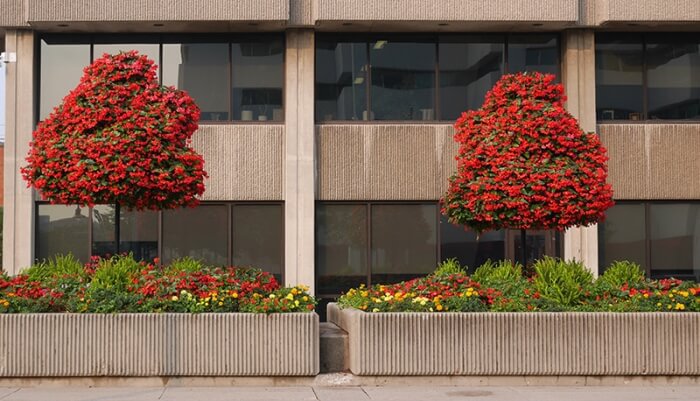
Planter boxes are a wonderful way to add additional plants, flowers, and trees to your home or business. Just like any other outdoor surface, they need additional waterproofing to extend their life and avoid expensive water damage.
When it comes to waterproofing a planter box, however, there are more considerations than many might realize. Read on to learn more about the benefits of planter box waterproofing and how you can waterproof the right way.
Why Waterproof Your Planter Box?
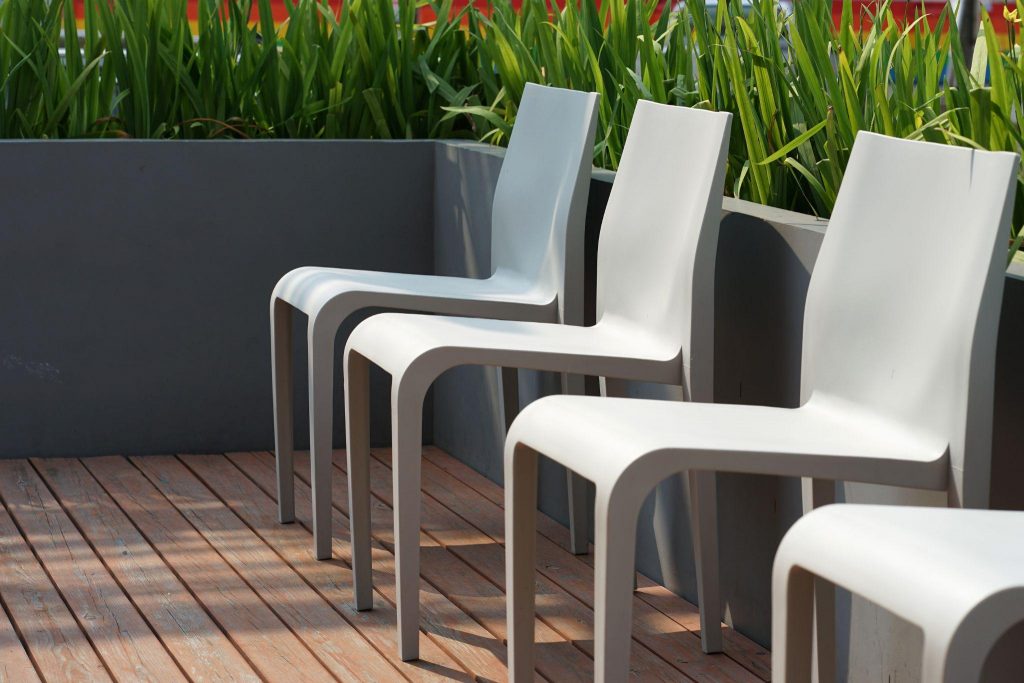
In most cases, planter boxes receive the greatest amount of water exposure of any outdoor structure. Since planter boxes must withstand both rain and regular watering, waterproofing is extra essential to protect your planter boxes from water damage.
While protection from water damage is the primary benefit of planter box waterproofing, there are a few additional benefits that may help improve the health of your plants and even reduce your water bill.
Prevent Water Damage
Whether your planter box is made from wood, concrete, or any other material, waterproofing is crucial for avoiding water damage. Planter boxes require more waterproofing than almost any other outdoor structure, since they must also withstand regular plant watering in addition to rain and other harsh weather conditions.
Preventing water damage in a planter box can also help prevent water damage to surrounding structures. With proper drainage and waterproofing, water won’t have a chance to infiltrate nooks and crannies that could eventually spread rot, rust, and mildew.
Save Water
Applying a waterproof coating to the inside surface of your planter boxes can help save water in the long run. While saving water might sound counterintuitive when it comes to waterproofing, planter boxes without waterproof coatings are prone to absorbing or leaking water while leaving plants dehydrated.
With a waterproof coating, your planter box will retain smaller amounts of water for longer without damaging its materials or structure. As a result, you’ll be able to maintain your plants with much less water—something that’s especially important in drier climates.
Healthier Plants
The water-saving benefits of planter box waterproofing also extend to the plants themselves. Where a planter box without waterproofing will leak or absorb water without providing enough for the plants, waterproof boxes save water and help promote healthy, hydrated plants.
As we’ll see later, most waterproof planter boxes still have drainage installed, allowing property owners and gardeners to strike the balance between proper hydration and sufficient drainage for even the most finicky plants.
Extend Planter Life
From avoiding water damage to maintaining healthier plants, waterproofing ultimately extends the life of the planter box itself. With both inside and outside surfaces thoroughly protected from rot, rust, mold, and mildew, waterproofing can significantly extend the life of planter boxes of any material.
Steps to Waterproofing a Planter Box
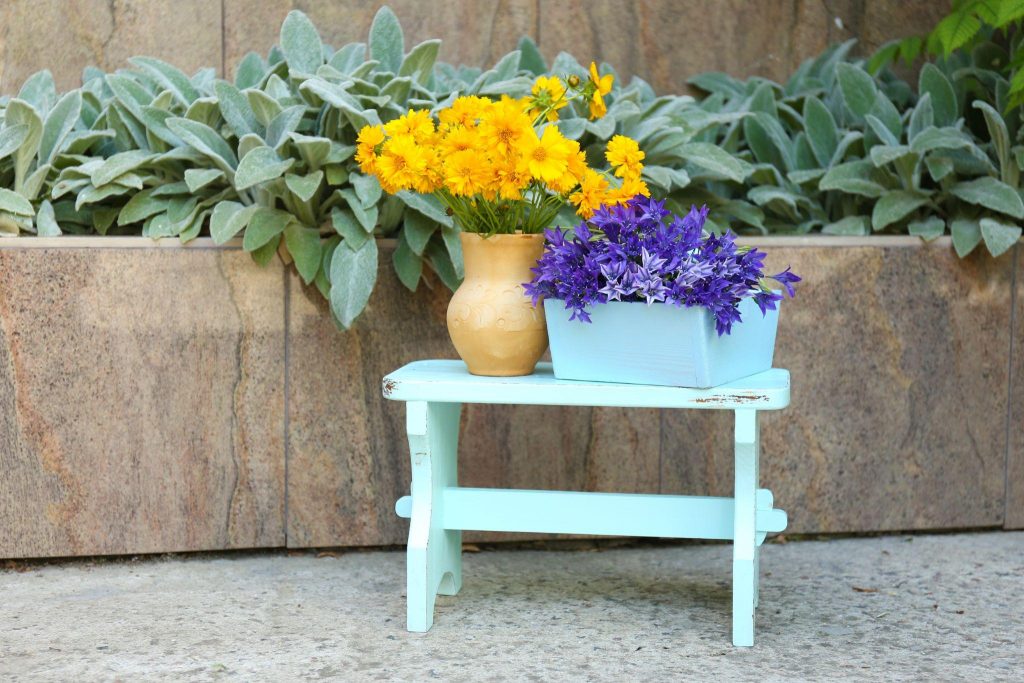
While planter box waterproofing follows a similar procedure to waterproofing decks, patios, and other outdoor surfaces, it often requires additional preparation to allow for proper soil drainage.
Before waterproofing can even begin, however, your planter box will need a little prep work!
Clean the Planter Box
No matter what you’re waterproofing, a clean surface is essential to ensure that waterproof coatings and meshes can adhere properly. Depending on the material and condition of the planter box, you may need to perform extensive surface preparation before waterproofing.
Of course, preparing a new planter box is easiest. With a surface free from dirt and deterioration, new planter boxes only require a quick sweep or soak to remove excess particles or debris. By contrast, older boxes require complete soil removal and an extensive cleaning of both interior and exterior surfaces.
For concrete and metal boxes, cleaning may require through pressure washing and other laborious surface preparations. Thankfully, most waterproofing professionals will do this step for you.
Install Drainage Points
Planter boxes need adequate drainage to prevent over-watering and water entrapment. If your planter box doesn’t already have a drainage system, then you’ll need to install one before applying a waterproof coating.
Drainage points also require extra preparation for waterproofing. Since drainage adds holes and corners to otherwise flat surfaces, they’ll likely need the same waterproof mesh strips as corners before a waterproof coating can be applied. Once this work is finished, however, waterproofing can proceed normally.
Apply Waterproof Coating
With a clean surface and plenty of drainage points, waterproofing can finally begin! As mentioned previously, drainage points and corners often require extra strips of waterproof mesh before waterproofing can begin. These mesh strips help ensure that hard-to-reach areas, such as tight corners and crevices, will remain waterproof if coatings don’t fully penetrate.
Just like a deck or other outdoor surface, waterproofing is usually applied as one or more liquid coats. Once the coats are dried and set, the waterproofing should last several years before reapplication is necessary. Planter box interiors may last even longer with proper drainage and the protection from sun, wind, and rain provided by the soil.
Superior Waterproofing from Capital Deck & Stair
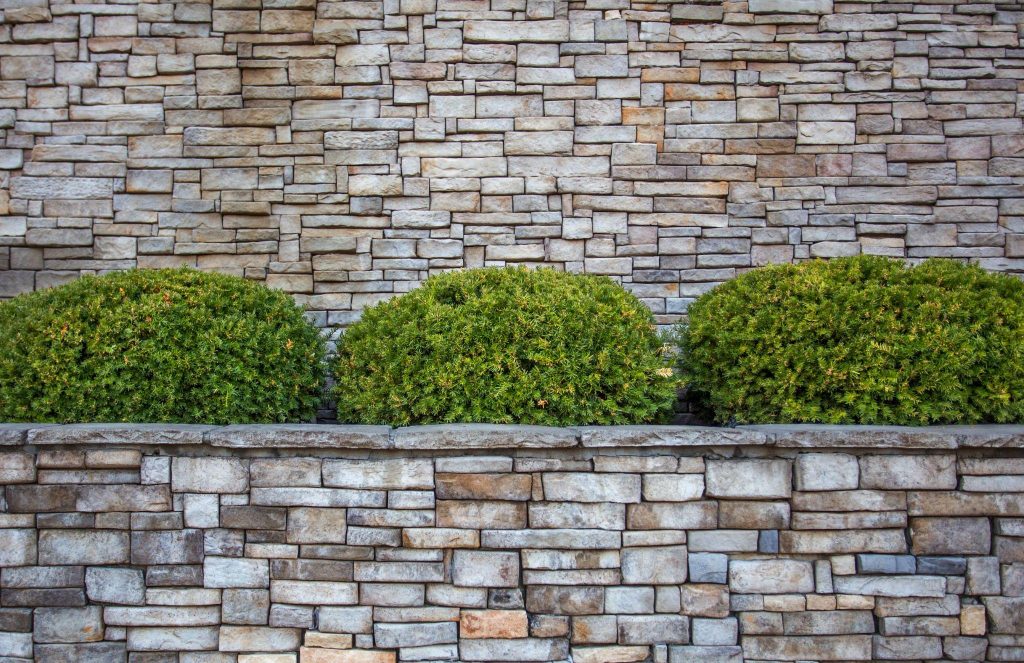
Planter box waterproofing is truly one of the most effective ways to maintain your outdoor structures and extend the life of both your plants and planter boxes. However, like any waterproofing job, extensive prep work and specialized materials make it difficult to DIY.
With waterproofing services from Capital Deck & Stair, you can enjoy peace of mind knowing that your planter boxes, decks, and other outdoor surfaces are able to withstand any rain and water that comes their way. All of our waterproof coatings are backed by an extended warranty and money-back guarantee. Call us at (888) 508-2966 to learn more about our waterproofing services and receive a free quote!
How to Waterproof a Balcony
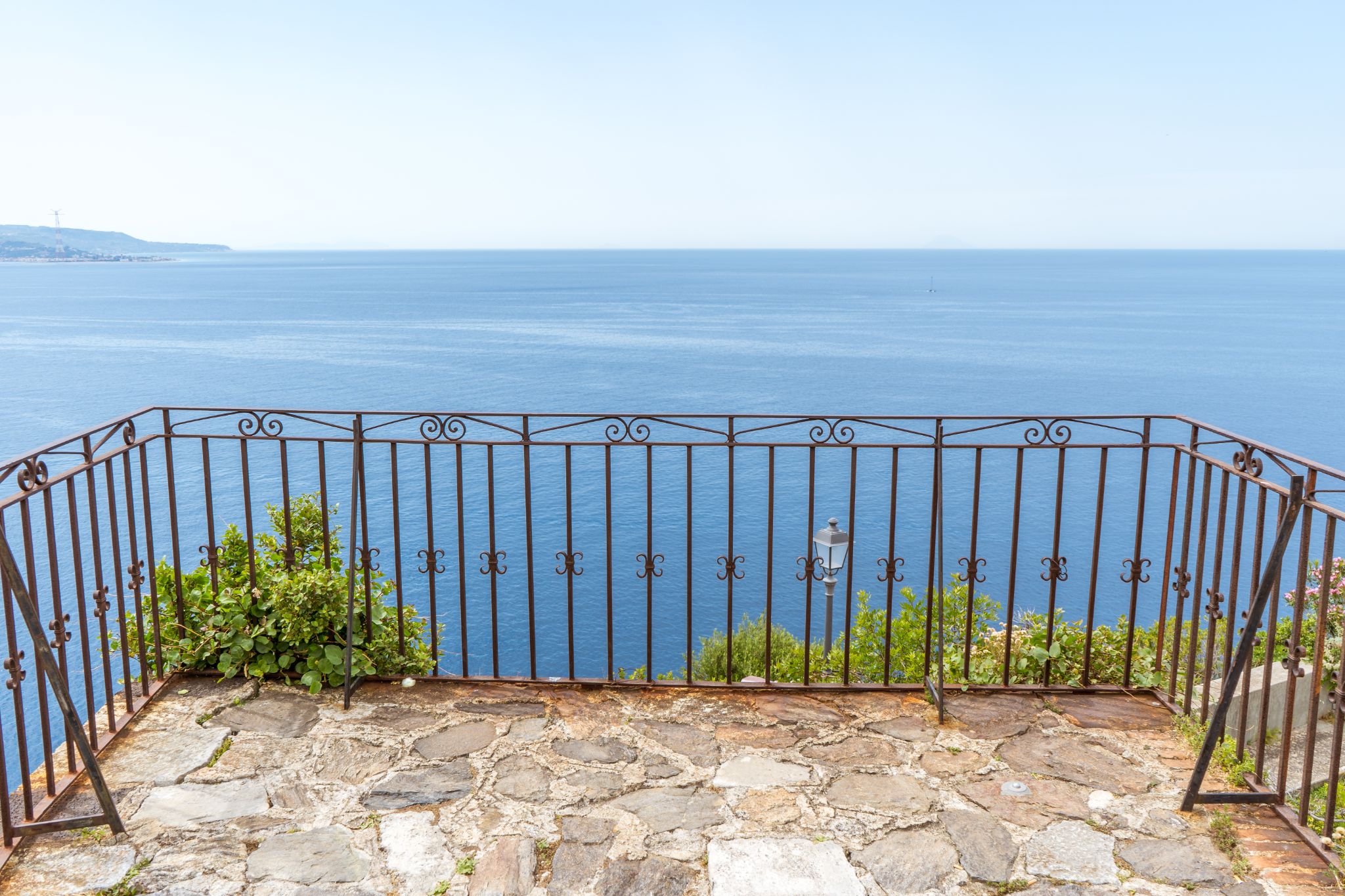
Waterproofing your balcony is one of the best ways to keep it strong and safe for years to come. Since balconies are constantly exposed to rain and harsh weather conditions, balconies without thorough waterproofing often begin to deteriorate within only a few years.
Thankfully, there are a few things you can do to waterproof and secure your balcony. While there are a few DIY options available, a professional can help in some unexpected ways—many of which are also unexpectedly affordable.
About Balcony Waterproofing
Deck waterproofing is the process of applying a waterproof coating or sealant to your deck’s surface. While the exact coating used may vary depending on the surface material, the underlying principle is the same: creating a barrier between water and your deck.
Deck Dangers: The Importance of Waterproofing
Waterproofing is highly recommended for all outdoor surfaces, especially decks and balconies. Since these surfaces receive constant exposure to the elements, having a protective coating is crucial for protecting the structure against damage and deterioration.
Water and weather aren’t the only deck dangers, however: Foot traffic, furniture, and other forms of wear and tear can also affect your deck or balcony’s integrity. Thankfully, waterproof coatings also help guard against this extra wear and tear by enhancing the overall durability of your outdoor surfaces.
For many property owners, however, waterproofing seems more like an expensive “add on” than a valuable investment—until their balconies start falling apart, that is!
Do I Need Balcony Waterproofing?
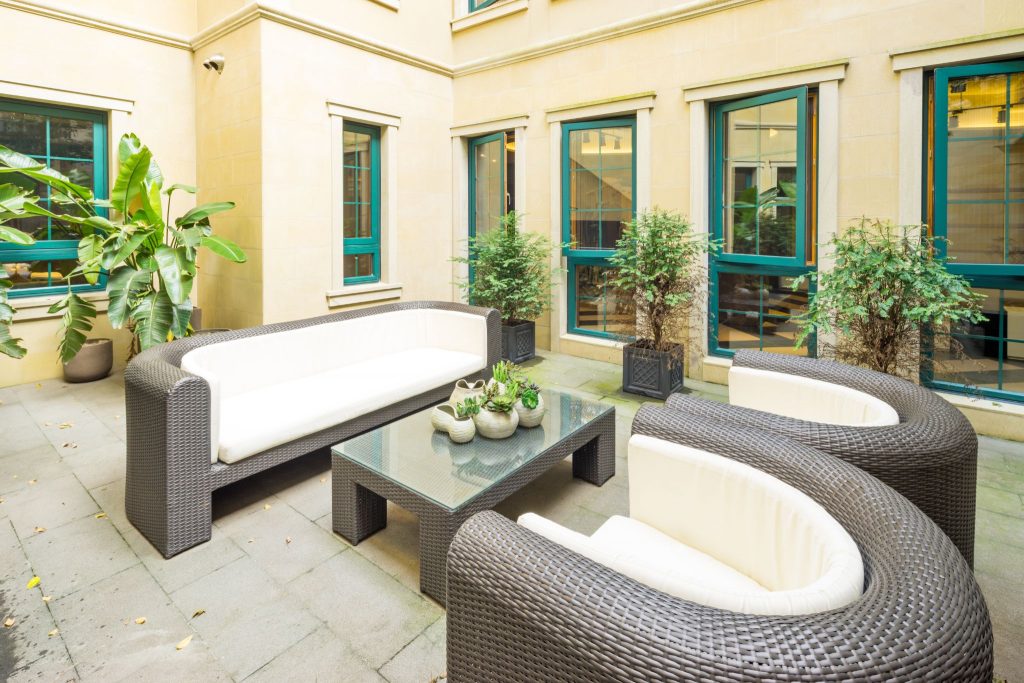
Every balcony in every climate can benefit from waterproofing in some way. The benefits are especially clear for balconies in wet and humid climates with high amounts of regular rainfall. Here, waterproofing not only protects surfaces during rainstorms but helps prevent rot and rust forming from ambient humidity and trapped water.
What about dry climates? Don’t be fooled: Balconies and decks in dry climates are especially susceptible to water damage since long periods of dryness can make wood and other materials soak up moisture like a sponge. As a result, when rain or water finally does come, the resulting water damage can be especially bad.
In addition to protecting the balcony itself, waterproofing also helps protect the surrounding structure from residual water damage while also maintaining and preserving your balcony’s original finish. With all these benefits, many property owners are quick to start waterproofing themselves.
The Balcony Waterproofing Process
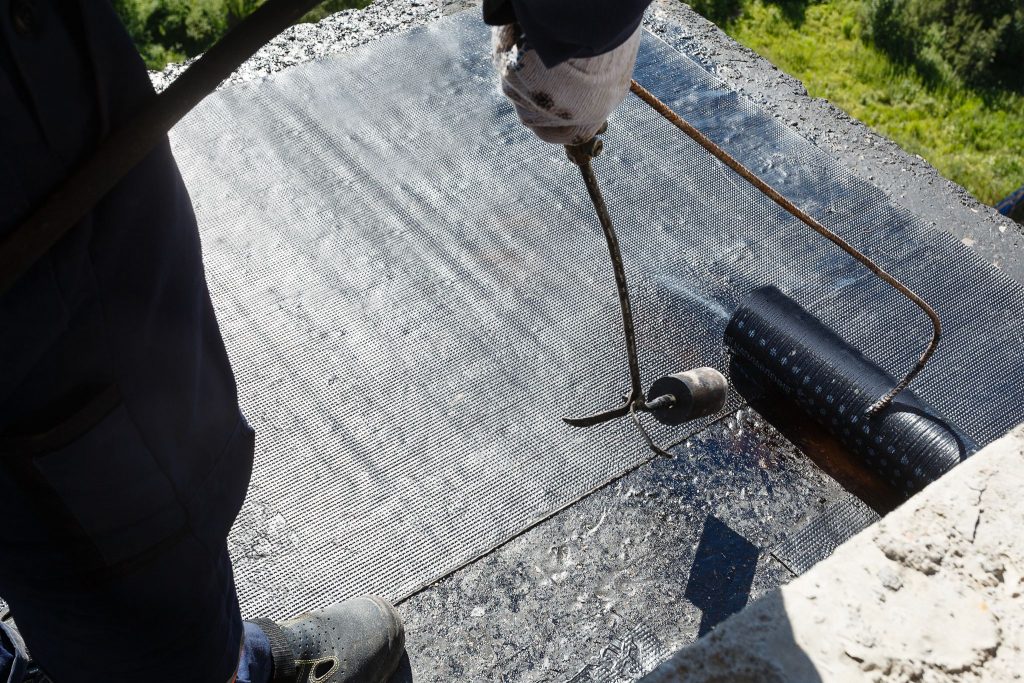
There’s more to balcony waterproofing than just brushing on a finish coat! Like painting and other surface treatments, waterproofing requires a careful combination of surface preparation, application, and finishing to form a proper seal.
Surface Preparation
Most waterproof coatings require a clean and well-prepared surface to adhere properly. While preparation methods can vary, depending on the surface material, all surfaces should be thoroughly cleaned and free of dirt, debris, and dust before coating.
While concrete or masonry surfaces require little preparation beyond cleaning, wood and metal—two very common balcony materials—require extra preparation. Wood, for example, should be thoroughly finished and sanded before applying waterproofing. Metal surfaces should also be completely free of rust; otherwise, the rust will continue to develop regardless of the waterproof coating.
In addition to cleaning the surface, you may also need to fill in cracks with a polyurethane sealant or apply a primer. Whether you’ll need to use a primer depends on your balcony’s surface material and the type of waterproof coating you’ve chosen.
As you might be able to imagine, most of the work involved with waterproofing is in the preparation! Just like with painting and finishing, however, preparation will determine the quality and integrity of the waterproof coating.
Waterproofing Application
With the surface thoroughly prepared, the waterproofing can finally begin!
Depending on your balcony’s shape and construction, waterproofing will require laying strips of PVC/mesh waterproofing membrane along all corners and joints. These strips are first secured using a liquid waterproof coating as an adhesive and laying them on while the coating is still wet. Once the strips are set, a second coat of waterproofing is applied over the strips to seal them completely.
It’s also worth applying the same process to the edges and drains of your balcony where possible. Edges and drains receive the greatest amounts of water flow and should also be sealed with PVC/mesh strips before applying the final coat.
Finally, with mesh applied to corners and other hard-to-reach or “high flow” areas, a final coat of liquid waterproof coating is applied using a roller brush or spray applicator. Once the coat dries, the balcony will be completely waterproof—assuming preparation and application were done correctly, of course!
Long-Term Care
Though waterproof balconies are relatively low-maintenance, the coating can start to wear down after years of wear and tear. As a result, your balcony will likely require regular re-coatings over the course of its life. How often you’ll need to re-coat your balcony will depend on your climate and your balcony’s exposure to rain and regular use.
DIY or Professional?
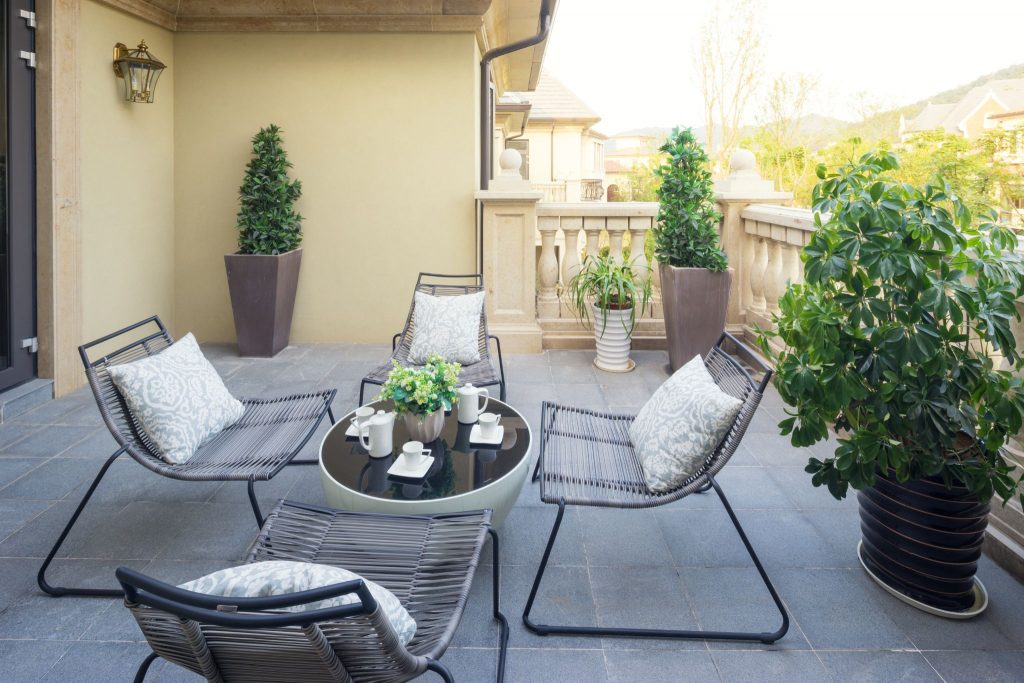
While it’s definitely possible to waterproof your balcony by yourself, it’s an incredibly laborious process that requires careful planning and preparation.
Since a waterproofing job can easily go awry without the right application, it’s usually best to call a professional to ensure a thorough job and ultimately save time and money. Waterproofing professionals will also be able to identify key areas on your balcony that may need more waterproofing than others.
When in doubt, the Capital Deck & Stair team is here to help! For over 30 years, our family-owned-and-operated team has helped property owners throughout the Los Angeles area waterproof and protect their balconies, decks, and more. For more information and a free quote, call us at (888) 508-2966!
7 Ways You Should Invest in the Exterior of Your Home
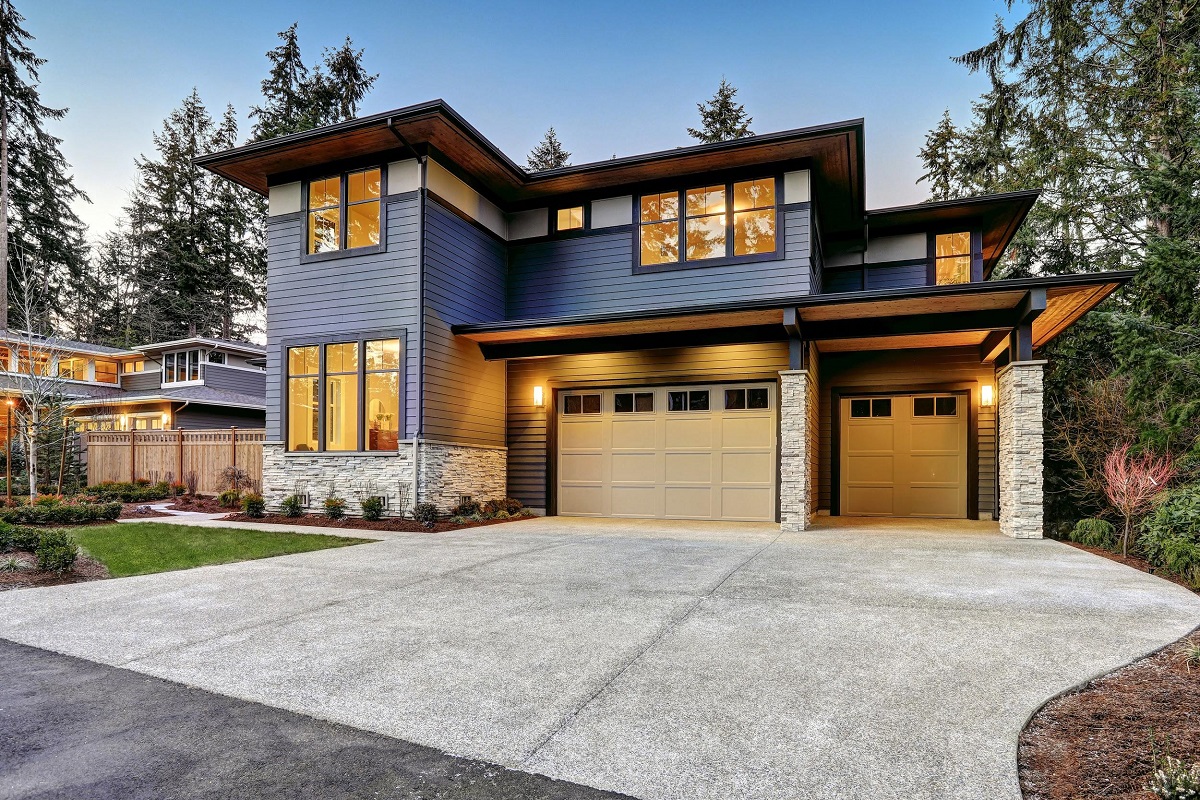
Investing in the exterior of your home can have many benefits. It can improve aesthetics and provide space to relax or enjoy recreational activities. There may also be opportunities to increase curb appeal and property value. If you’re wondering how to update the exterior of your home, here are a few design ideas to consider.
1. A New Garage Door
The garage door is a prominent feature, so an update can have profound results. Paneled, carriage style, and other types of doors can add intricate details. Even if your garage door has some service life left, you can go beyond repainting to replace it and take advantage of modernized features like Wi-Fi control and monitoring.
If debating whether to pay for a new garage door, consider that, according to Remodeling Magazine’s 2019 Cost vs. Value Report, nearly 98% of the cost can be recouped when selling your home.1
2. Add Exterior Lighting
There are many energy-efficient options, so adding more lighting won’t have a significant impact on your utility bill. Exterior lighting can highlight your home’s architecture, trees, or landscaping elements. It can also provide visibility along a yard path, around a garage, or by the front door. Outside lighting can add ambience, but don’t forget it can also deter would-be burglars and thieves; therefore, it’s a great safety and security measure for the front of the house.
3. Update the Roof
Roof replacement is an expense most homeowners want to avoid, but a worn roof may need replacement after 20 years. If there are missing shingles or water damage, chances are other underlying problems are present.
Replacement is pretty high on the list as far as ROI, but, if an inspector doesn’t suggest replacement, redoing the shingles can spruce up the look of your home. Modern asphalt shingles come in many different shapes, colors, and patterns. Shingles aren’t cheap, but you can recoup a healthy percentage of the cost when selling a home.
4. Build a Deck
An attached or detached deck adds outdoor living space. A wood deck can add a fair amount to your home’s selling price as well. The opportunities it provides for entertaining guests, grilling, relaxing, sunbathing, or spending time alone or with family is invaluable. Much goes into a deck, from wood and other flooring materials to finishes, railings, and stairs; a renovation contractor can help design, plan, and build the perfect deck for your home.

5. Add Planters to Your Landscaping
Attractive landscaping can include stone walkways, fountains, and planters. A planter is easier to maintain than a garden and can be selected in a color and texture that complements your home’s exterior design. You can decorate a planter for every season and have your pick of greenery, flowers, and even vegetables such as decorative kale, lettuce, onions, and peppers.
6. Create a Patio
A backyard patio creates a flexible outdoor space where you can play ball on an adjacent lawn or install an outdoor kitchen or fire pit. Various landscape elements can be added, or you can cover your patio so it’s useful even on rainy days. Patios are ideal for recreation, relaxing, and entertaining.
7. Refresh Your Landscape
A full landscape overhaul provides numerous opportunities. You can add a walkway, stone or concrete pavers, flower beds, stone planters, colorful flowers, or stylish borders. It’s also a chance to remove weeds, replace mulch, and mow the lawn. If you have the budget for it, dark flagstone can update the porch and stairs and increase property value.
Waterproof Your Home Exterior with Capital Deck & Stair
Waterproofing can protect decks, walkways, balconies, and other outdoor elements. Our coatings allow materials to withstand wet weather and exposure to UV light. Whether you have stone, tile, brick, wood, or slate surfaces, the expert contractors at Capital Deck & Stair can ensure they are protected. We even provide a sealant that waterproofs metal, rubber, porcelain, or glass.
If you’re wondering how to update the exterior of your home or business, call (888) 508-2966 today to learn more about our residential and commercial waterproofing services in Los Angeles.
Source:
How to Avoid a Slip and Fall Lawsuit on Your Property
If you regularly welcome people to properties that you own, whether as a landlord or a business owner who operates a retail space, you might be worried about slip and fall liability. After all, if someone is injured in a fall on your property and it is determined that you have been negligent in some way, the financial ramifications could be significant. Fortunately, there are several options for reducing your exposure, here, including using building waterproofing surfaces. Let’s take a closer look at this important topic.
Start with Stairs
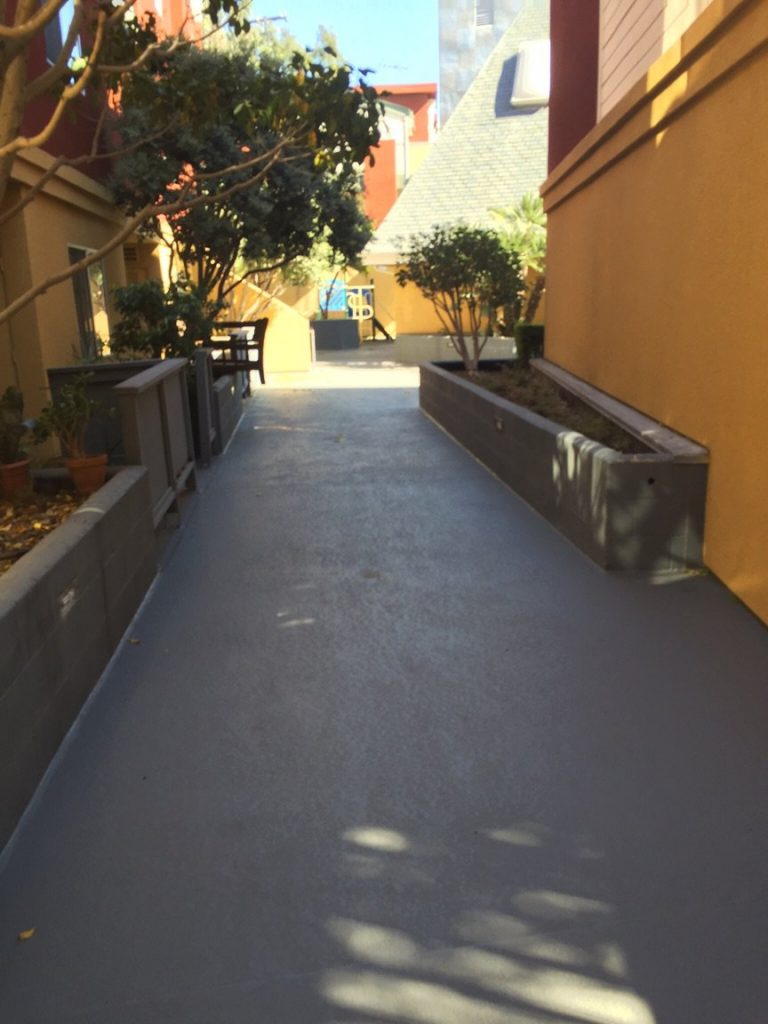
As you take an overview of your property to determine where you can make safety improvements, stairs are a good place to start. There are a few points you can check regarding your stairs, including the presence of a solid, secure handrail. Having a handrail available is important for safe use of the stairs, but it will only be helpful if it is secured firmly in place.
Also, check to make sure the rise between each stair is even. When walking up or down the stairs, people naturally expect each step to be the same as the last. If there are awkward changes in how much the stairs rise between each tread, those spots could become a problem.
Avoid Slippery Spots
Something as simple as a slippery floor can create the environment for a slip and fall accident to occur. Consistently cleaning up your spaces is an important part of avoiding slippery spots, but you can also have some areas treated by commercial waterproofing contractors to create better traction. Good waterproofing companies in Los Angeles, CA will be able to create walking surfaces that make it easier for users to maintain their footing.
Present a Tidy Space
You don’t want to force your customers or visitors to navigate around messy areas that may cause them to stumble and be injured. For instance, in a retail store, leaving loose boxes piled up in areas that are meant for use by customers would be setting the stage for an accident to occur. Be sure to keep up with organizational tasks during business hours to not only keep everyone safe but also offer a better experience for your customers.
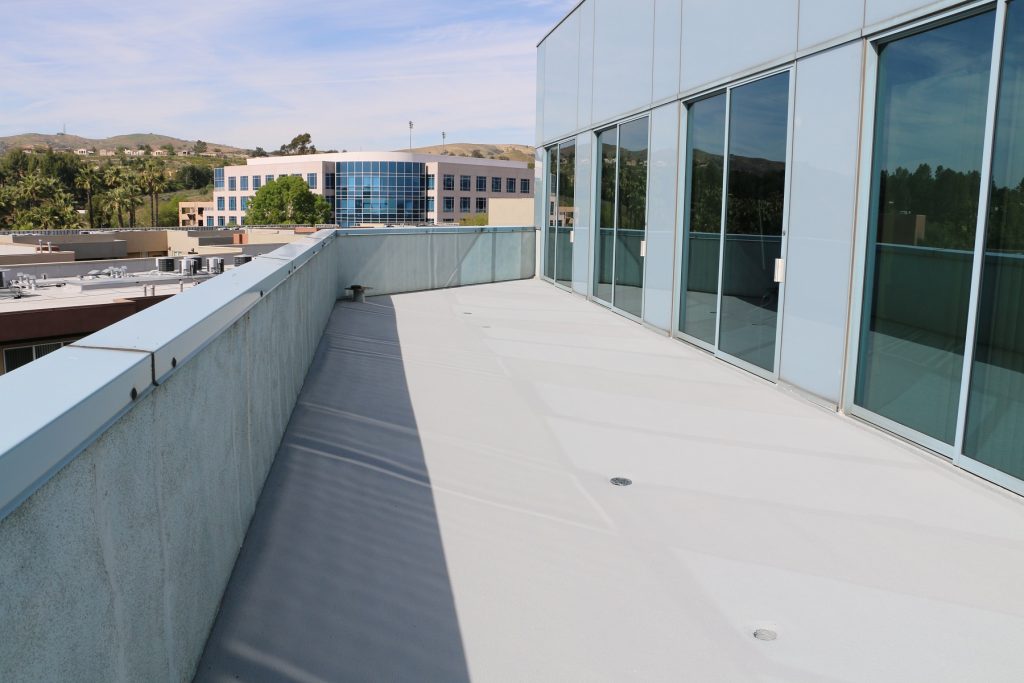
Getting Help
If you still aren’t sure exactly what you should do around your property to limit your slip and fall risks, consider asking your insurance company for help. Some insurance companies will be happy to provide free resources to help you make improvements since they would prefer to avoid any claims coming down the line. This can be a great way to have a professional take a direct look at your property, so any concerns can be highlighted and remedied.
Capital Deck & Stair Can Help
For the waterproofing portion of this task, contact Capital Deck & Stair today. We are an experienced LA-area waterproofing company with all the experience and knowledge necessary to handle this job. Thank you for stopping by!
RECENT POSTS
categories
- Uncategorized
- Waterproofing
- Stair Tread Replacement
- FAQ
- Balconies
- Precast Iron Stairs
- Outdoor Stairs
- Leisure Deck
- Deck Resurfacing
- Pool Decks
- Deck Maintenance
- Deck Staining
- Deck Materials
- Nonslip Deck Coatings
- Fiberglass Stairs
- Gardening
- Deck Repair
- Patio Waterpoofing
- Commercial waterproofing
- Concrete Waterproofing
